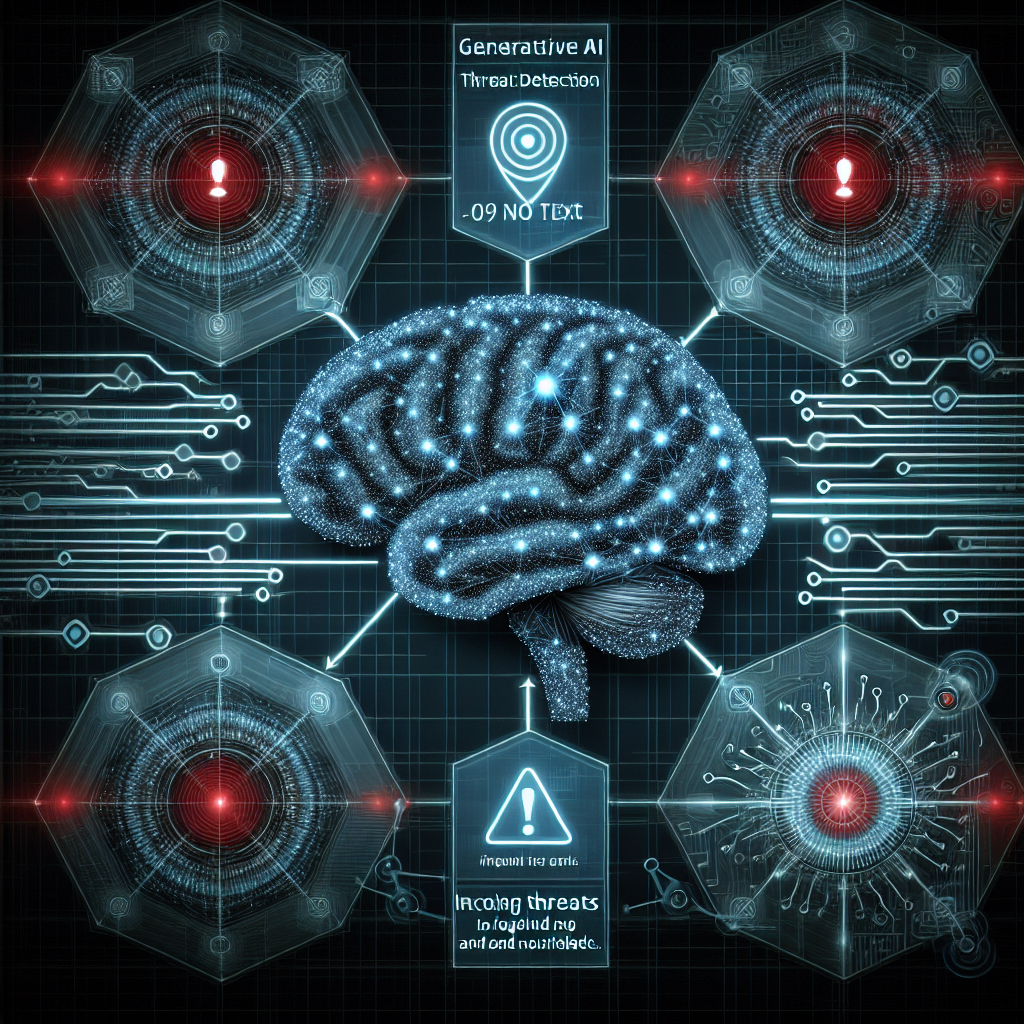In recent years, the field of cybersecurity has become increasingly complex as cyber threats continue to evolve and become more sophisticated. Traditional cybersecurity measures are no longer enough to protect organizations from these advanced threats. This is where generative AI comes into play.
Generative AI, also known as generative adversarial networks (GANs), is a type of artificial intelligence that can generate new data based on patterns it has learned from existing data. This technology has been used in a variety of applications, from creating realistic images and videos to generating new music and art. In the realm of cybersecurity, generative AI has emerged as a powerful tool for detecting and mitigating cyber threats.
The Role of Generative AI in Cybersecurity Threat Detection
Generative AI can play a crucial role in cybersecurity threat detection by analyzing massive amounts of data to identify anomalies and patterns that could indicate a potential cyber threat. Traditional cybersecurity tools often rely on rules-based systems that are limited in their ability to detect new or unknown threats. Generative AI, on the other hand, can adapt and learn from new data, making it more effective at detecting novel threats.
One of the key advantages of generative AI in cybersecurity is its ability to detect advanced persistent threats (APTs). APTs are sophisticated, targeted attacks that are designed to evade traditional security measures. Generative AI can analyze network traffic, user behavior, and other data sources to detect subtle indicators of an APT. By identifying these threats early, organizations can take proactive measures to mitigate the damage.
Generative AI can also be used to enhance threat intelligence by analyzing vast amounts of data from various sources, including social media, dark web forums, and threat feeds. By identifying patterns and trends in this data, generative AI can help security analysts stay ahead of emerging threats and take proactive measures to protect their organizations.
Another important application of generative AI in cybersecurity is in the realm of malware detection. Malware is a common threat that can cause significant damage to organizations, including data breaches, financial losses, and reputational damage. Generative AI can analyze malware samples to identify common characteristics and signatures that can be used to detect and block new variants of malware.
In addition to threat detection, generative AI can also be used to enhance incident response and forensic analysis. By analyzing logs, network traffic, and other data sources, generative AI can help security teams quickly identify the root cause of a security incident and take remedial action to prevent future attacks.
Overall, generative AI has the potential to revolutionize the field of cybersecurity by providing organizations with advanced threat detection capabilities that can help them stay ahead of evolving cyber threats.
FAQs
1. How does generative AI differ from traditional cybersecurity tools?
Generative AI differs from traditional cybersecurity tools in that it can adapt and learn from new data, making it more effective at detecting novel threats. Traditional cybersecurity tools often rely on rules-based systems that are limited in their ability to detect new or unknown threats.
2. What are some common applications of generative AI in cybersecurity?
Some common applications of generative AI in cybersecurity include threat detection, malware analysis, threat intelligence, incident response, and forensic analysis.
3. How can generative AI help organizations protect against advanced persistent threats?
Generative AI can help organizations protect against advanced persistent threats by analyzing network traffic, user behavior, and other data sources to detect subtle indicators of an APT. By identifying these threats early, organizations can take proactive measures to mitigate the damage.
4. What are some of the challenges associated with implementing generative AI in cybersecurity?
Some of the challenges associated with implementing generative AI in cybersecurity include the need for large amounts of data for training, the complexity of the algorithms involved, and the potential for adversarial attacks that could compromise the effectiveness of the AI system.
5. How can organizations leverage generative AI to enhance their cybersecurity posture?
Organizations can leverage generative AI to enhance their cybersecurity posture by incorporating AI-powered threat detection tools into their existing security infrastructure, training security analysts on how to use generative AI tools effectively, and staying up to date on the latest developments in AI technology.
In conclusion, generative AI has the potential to revolutionize the field of cybersecurity by providing organizations with advanced threat detection capabilities that can help them stay ahead of evolving cyber threats. By leveraging the power of generative AI, organizations can enhance their cybersecurity posture and protect against a wide range of threats, from advanced persistent threats to malware attacks. Through continued research and development, generative AI has the potential to become an indispensable tool in the fight against cybercrime.

